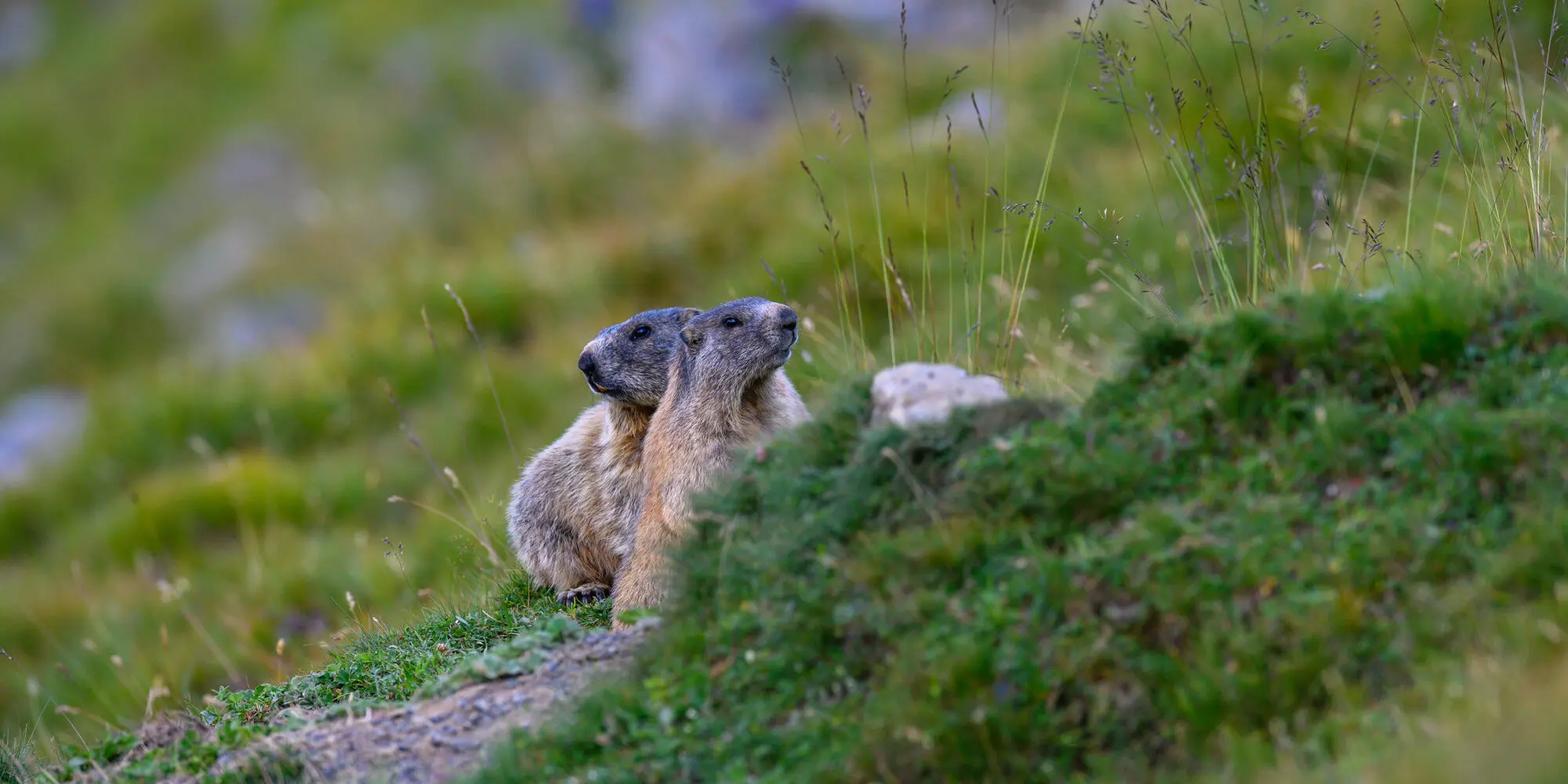Observing animals
Animal spotting requires a lot of patience and a bit of luck. But the better you know the behaviour of the animals, the better your chances of being in the right place at the right time. Telescopes and binoculars (available for hire at the National Park Centre) are important companions when observing animals. Our experienced guides will be happy to accompany you on a guided excursion.
Where? Various places, e.g. Alp Grimmels (Route 12, Route 13)
When? Until the end of September. Avoid hot midday hours.
You can basically observe marmots on all pastures and subalpine grasslands of the National Park. For example, on Alp Grimmels (Route 12, Route 13), Alp Stabelchod (Route 17) or at the Val Mela rest area in Val Trupchun (Route 01). They particularly avoid warm midday hours in high summer, otherwise observations are possible throughout the day. At the beginning of October, the animals disappear into their burrow and hibernate.
Where? Various places, esp. Murtaröl (Route 06), Val Cluozza (Route 08), Margunet (Route 17)
When? Entire season, regardless of time of day.
Chamois are grateful animals for wildlife observation. They can usually be spotted throughout the day and in various places in the National Park. With a little patience, search the areas above the forest boundary, you are sure to find them. Chamois can be recognised by their dark legs, the black and beige face mask and the dark line on their back.
Where? Val Trupchun (Route 01), Val Mingèr (Route 19), Il Fuorn (Route 13, Route 17, …)
When? June to mid-October. Move to higher, windy places in hot weather.
In the National Park, the red deer also stay in the open areas between and above the forests during the day. They can be observed particularly well in Val Trupchun (Route 01) from the first (Val Mela), second (Alp Trupchun) or third resting place (approx. 500 m after Alp Trupchun). On particularly hot days, they like to move up into the heights and it is worthwhile to seek out the third resting place and also to pay attention to the orographically (in the direction of flow of the watercourse) right side of the valley. The Val Mingèr (resting place Val Mingèr) is also a good place to observe deer. The deer rut beginning mid-September is a special spectacle in the Val Trupchun. But the rut can also be smelled, heard and seen in other areas, such as the Val Mingèr, the Val Cluozza or at Il Fuorn. If you are in the area too early, you may disturb the sensitive animals – thank you for your consideration to enter the park only after sunrise.
Where? Fuorcla Trupchun (Route 02), Murtersattel (Route 08)
When? Entire season. In midsummer in higher altitude areas.
Ibexes are sensitive to heat. In spring and early summer they still like to stay in the valleys, but in summer they climb back up to higher altitudes. In the Val Trupchun, for example, they can then be seen during the day near the Fuorcla Trupchun, especially well on the descent towards Livigno. In the morning and early evening hours, they can occasionally be seen again a little further down. On the Murtersattel and other, higher areas, it is often sufficiently cool or windy for them even in high summer.
Where? Various places, e.g. Mot Tavrü (Route 20), Munt la Schera (Route 15)
When? Entire season, especially at midday and in the afternoon.
Bearded vultures as well as golden eagles use the updrafts that form during the day. With their wings spread, they then circle upwards without flapping their wings. If you hear marmot whistles, it is worth looking up at the sky.
Adult bearded vultures are recognisable by their orange belly and diamond-shaped tail. Golden eagles, on the other hand, have a fan-shaped tail and wear dark brown plumage with single white areas in the arm wings until they are fully grown. With a wingspan of up to 2.20 m, eagles are smaller than bearded vultures (up to 2.80 m). A pair of golden eagles nests here and there at Hotel Il Fuorn. Let the staff in the Infomobile show you the eyrie.



